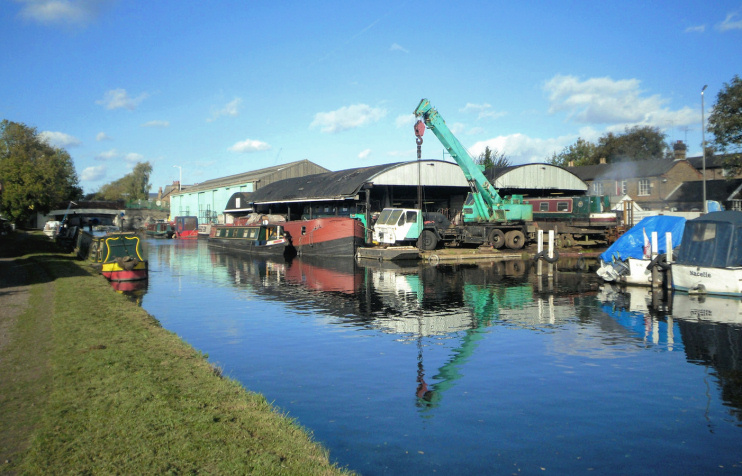Uxbridge Moor
Uxbridge Moor, Hillingdon
A canalside commercial zone in south-west Uxbridge, on the far western edge of Greater London

The Grand Junction (now Grand Union) Canal was dug through the moor in 1794, connecting Uxbridge with the Thames at Brentford. By 1800 the link to Birmingham was complete. Wharves and warehouses were constructed along the canal and coal for the surrounding district was offloaded here, while corn was taken aboard. Oil and mustard mills, glass and gas works prompted the building of workers’ homes, followed by the church of St John’s on the Moor in 1838 and a ragged school eight years later, both on Waterloo Road (and both since departed).
Except for the part to the north-east of Cowley Mill Road, Uxbridge Moor is still primarily a commercial zone, nowadays taking the form of a network of industrial estates and business parks. The coatings specialist Trimite is one of the larger businesses operating here. The photograph above* shows Uxbridge Boat Centre, a repair yard and chandlery at Uxbridge Wharf, on the Grand Union Canal.
Uxbridge’s residential boom has been making itself felt at the edges of the commercial area, for example in four blocks of apartments built on the site of a former Ford dealership at the corner of St John’s Road and Cowley Mill Lane.
The London Wildlife Trust manages a stretch of the bank that has willow woodland and meadows, at the north end of Riverside Way industrial estate, where a branch of the River Colne flows into the canal.
Cricket was played on the moor from at least 1735. Uxbridge cricket club was founded here in 1789, and England played Kent at the ground in the same year. The club moved to Uxbridge Common in the 1820s.
